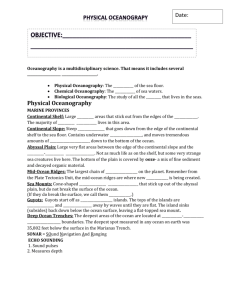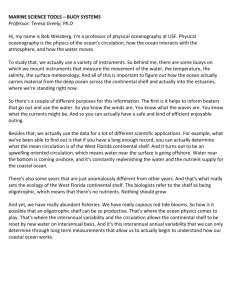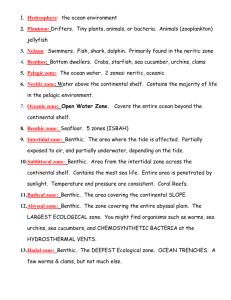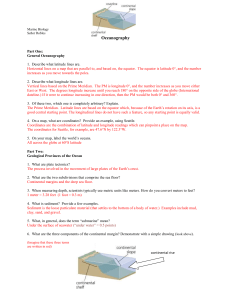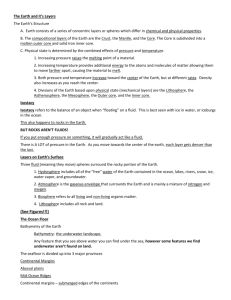S6E3: Students will recognize the significant role of water
advertisement
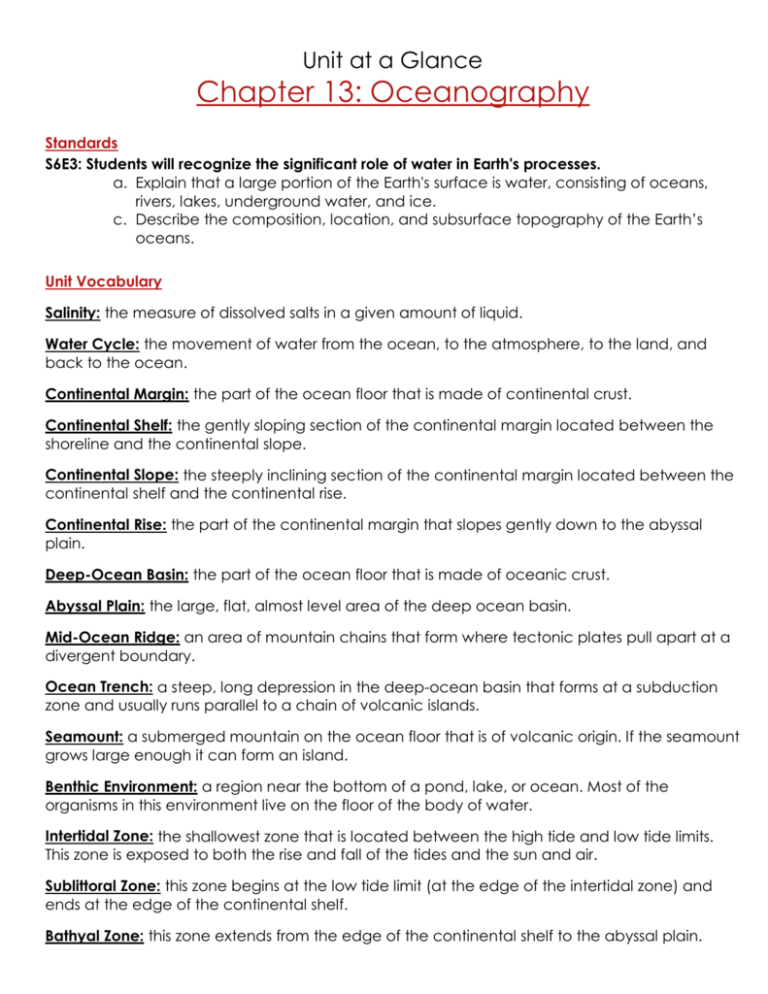
Unit at a Glance Chapter 13: Oceanography Standards S6E3: Students will recognize the significant role of water in Earth's processes. a. Explain that a large portion of the Earth's surface is water, consisting of oceans, rivers, lakes, underground water, and ice. c. Describe the composition, location, and subsurface topography of the Earth’s oceans. Unit Vocabulary Salinity: the measure of dissolved salts in a given amount of liquid. Water Cycle: the movement of water from the ocean, to the atmosphere, to the land, and back to the ocean. Continental Margin: the part of the ocean floor that is made of continental crust. Continental Shelf: the gently sloping section of the continental margin located between the shoreline and the continental slope. Continental Slope: the steeply inclining section of the continental margin located between the continental shelf and the continental rise. Continental Rise: the part of the continental margin that slopes gently down to the abyssal plain. Deep-Ocean Basin: the part of the ocean floor that is made of oceanic crust. Abyssal Plain: the large, flat, almost level area of the deep ocean basin. Mid-Ocean Ridge: an area of mountain chains that form where tectonic plates pull apart at a divergent boundary. Ocean Trench: a steep, long depression in the deep-ocean basin that forms at a subduction zone and usually runs parallel to a chain of volcanic islands. Seamount: a submerged mountain on the ocean floor that is of volcanic origin. If the seamount grows large enough it can form an island. Benthic Environment: a region near the bottom of a pond, lake, or ocean. Most of the organisms in this environment live on the floor of the body of water. Intertidal Zone: the shallowest zone that is located between the high tide and low tide limits. This zone is exposed to both the rise and fall of the tides and the sun and air. Sublittoral Zone: this zone begins at the low tide limit (at the edge of the intertidal zone) and ends at the edge of the continental shelf. Bathyal Zone: this zone extends from the edge of the continental shelf to the abyssal plain. Unit at a Glance Hadal Zone: this is the deepest benthic zone. It consists of the of the floor of the ocean trenches and any organisms that exist there. Pelagic Environment: a region near the surface or middle of a pond, lake, or ocean. Most of the organisms in this environment swim in the water. Neritic Zone: this zone consists of the water that covers the continental shelf. Oceanic Zone: this zone includes the volume of water that covers the entire sea floor except for the continental shelf. Benthos: all organisms that live at the bottom of the ocean or on the ocean floor. Plankton: a mass of mostly microscopic organisms that float or drift in freshwater and marine environments. Nekton: all organisms that swim freely and actively in open water. Essential Questions 1. What does the ocean floor look like? 2. What are the two major regions of the ocean floor? What are their features? 3. What are the three main types of organisms that live in the ocean? 4. What are the major zones of the Benthic Environment? The Pelagic Environment? (Start with the one that is MOST shallow).

